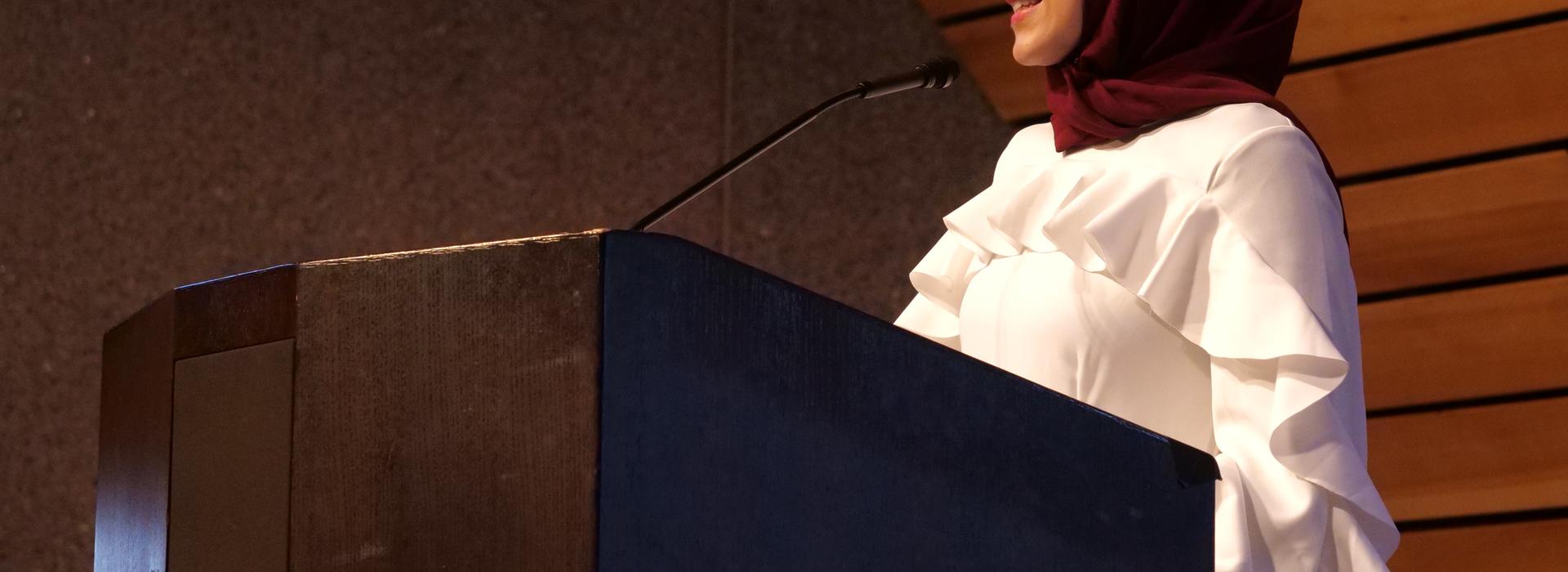
UMN Medical School’s Center for the Art of Medicine Harnesses the Power of Storytelling
Author Salman Rushdie wrote, “Man is the Storytelling Animal, and that in stories are his identity, his meaning and his lifeblood.” For University of Minnesota Medical School Center for the Art of Medicine (CFAM) co-directors Dr. Ben Trappey and Dr. Maren Olson, this quote expresses the deep meaning and importance of storytelling in the medical field.
“The thing that separates us from other animals is our ability to communicate through stories,” Dr. Trappey says. “Stories are essential to who we are as human beings, and they’re essential to the practice of medicine because they connect us to our humanity and to the humanity of our patients and colleagues.”
CFAM was founded in early 2020 after Dr. Jon Hallberg, professor in the Department of Family Medicine and Community Health and creator of Hippocrates Cafe, was approached by Dean Jakub Tolar about creating a center that would elevate the role of arts and humanities in medical education and practice.
“We’re incredibly lucky that Dean Tolar is also passionate about how the arts and humanities are integral and woven into medicine,” Dr. Olson emphasizes.
Having worked with Dr. Olson and Dr. Trappey in the past on artistic endeavors like their Story Slams, an event for medical professionals to share their creative stories live to build community and promote well-being among physicians, Dr. Hallberg knew that they were the ideal duo to direct this new center.
Dr. Olson and Dr. Trappey have both been engaged in storytelling in medicine since before CFAM; they have hosted writing groups, shared poems with their medical staff and published reflective pieces in medical journals, including Dr. Trappey’s “Running on Fumes,” an essay about burnout during the COVID pandemic that received a large amount of media attention. Both doctors express how fulfilling it was to take the humanities work they loved doing and channel it into a formal professional endeavor.
“I was already doing some of these things, but still not thinking you could actually make an academic career out of this,” Dr. Trappey explains. “It’s been through incremental things that it started to build momentum, and now it’s a big part of the work I’m able to do, which is pretty exciting.”
In its short time in existence, CFAM has become a force in the Medical School community, winning two regional Emmys for their Art + Medicine productions with Twin Cities Public Television, providing grants to over 30 medical students to pursue a new artistic endeavor, and developing a reflective writing elective for medical students. As CFAM continues to grow, both Dr. Olson and Dr. Trappey say that they hope to add even more depth to the Storytelling in Medicine program.
“We’ve done some research around our storytelling events that showed that there were really positive impacts on well being for folks that attended,” Dr. Olson elaborates. “People felt connected to their community, which is something that’s been shown to be protective against burnout in medicine. People felt grateful. They felt re-connected with a sense of meaning and purpose.”
In addition to preventing burnout, CFAM’s mission is to use stories as a tool for advocacy, ensuring that traditionally marginalized voices are overrepresented in their storytellers.
“There’s a hunger for it,” says Dr. Olson. “It’s fascinating to talk about it within the U of M community and nationally. There is a hunger for the arts.”
Dr. Trappey agrees, saying, “The better you are at understanding and engaging with stories, the more whole of a physician you will be. Understanding stories, and engaging and creating with them allows us to fully embrace our humanity as doctors and patients.”